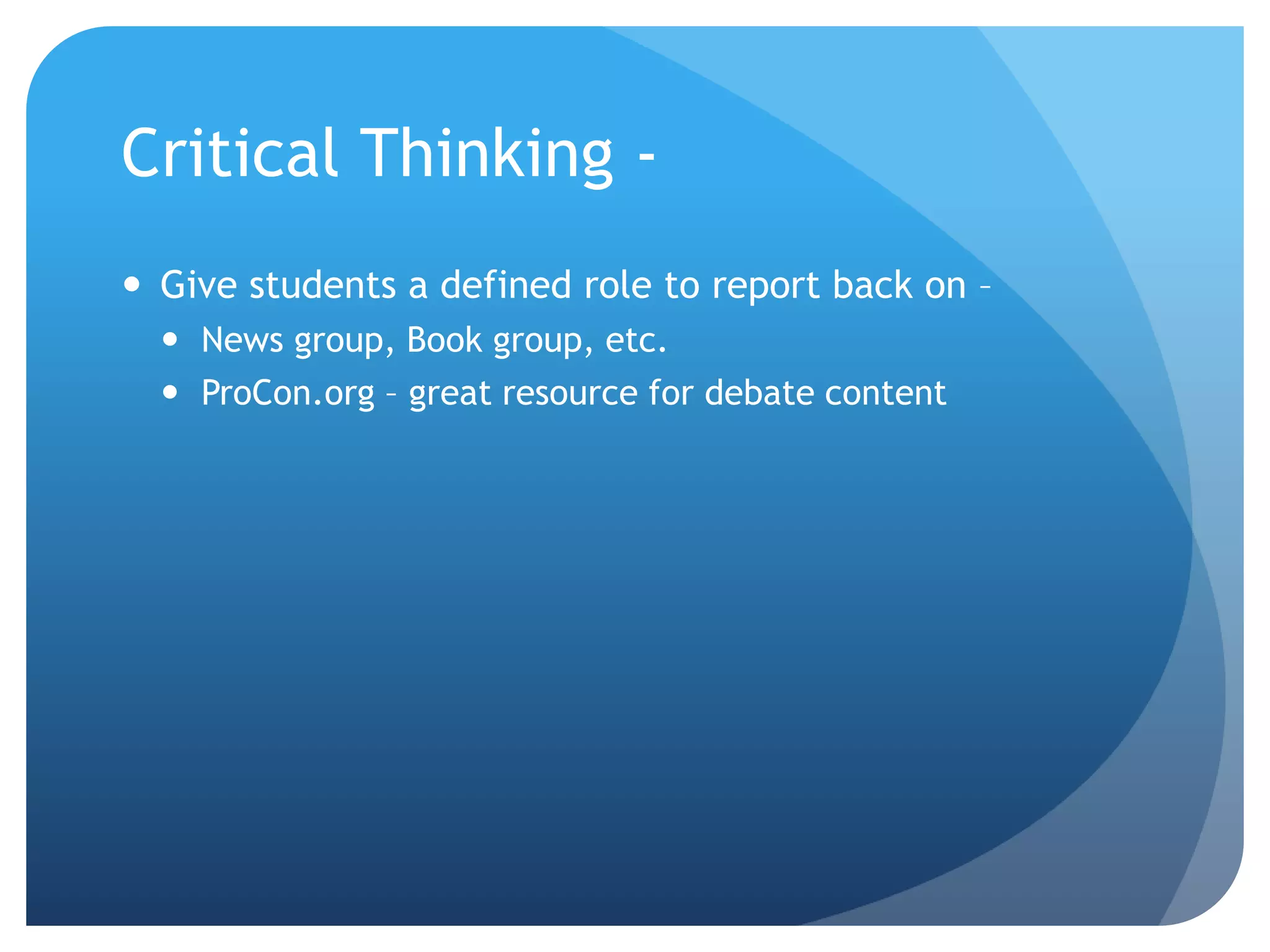The document summarizes presentations from the TexTESOL conference in San Antonio in October 2015. It provides information on several sessions focused on tools and techniques for teaching English literacy using comics, academic vocabulary, writing skills, blended learning, critical thinking exercises, and assessing writing ability using the IELTS rubric. Presenters discussed apps and websites for creating comics, online listening exercises, and vocabulary games. Effective strategies included incorporating TED talks, modeling writing skills, and using rubrics to provide structured feedback to students.

























